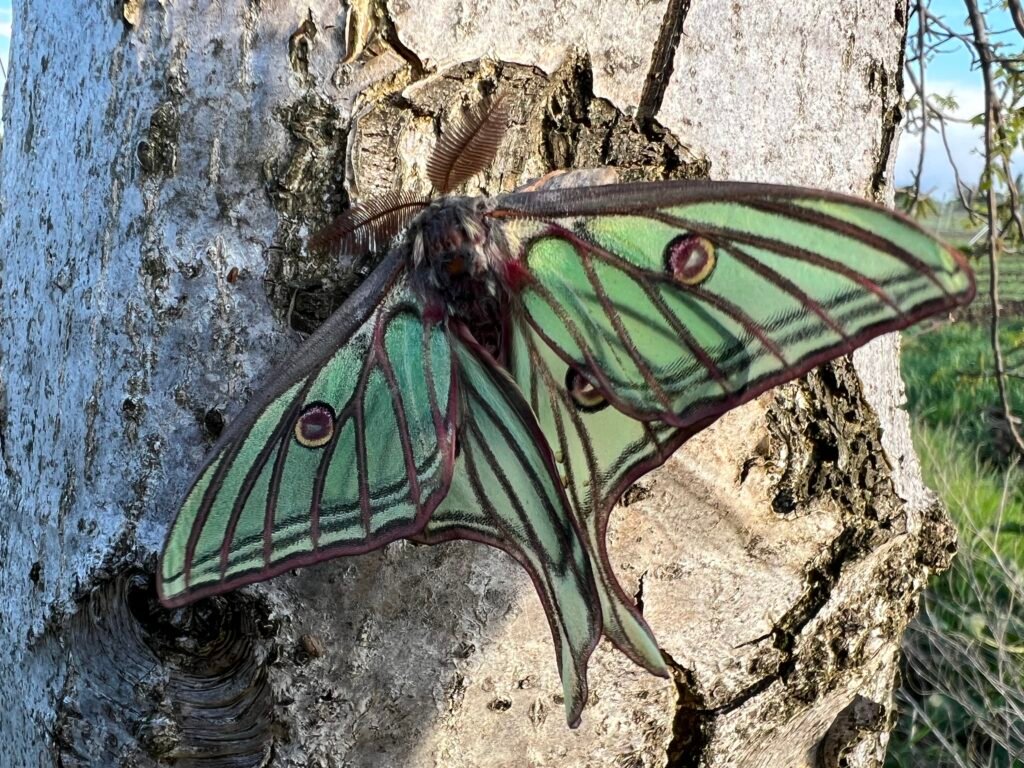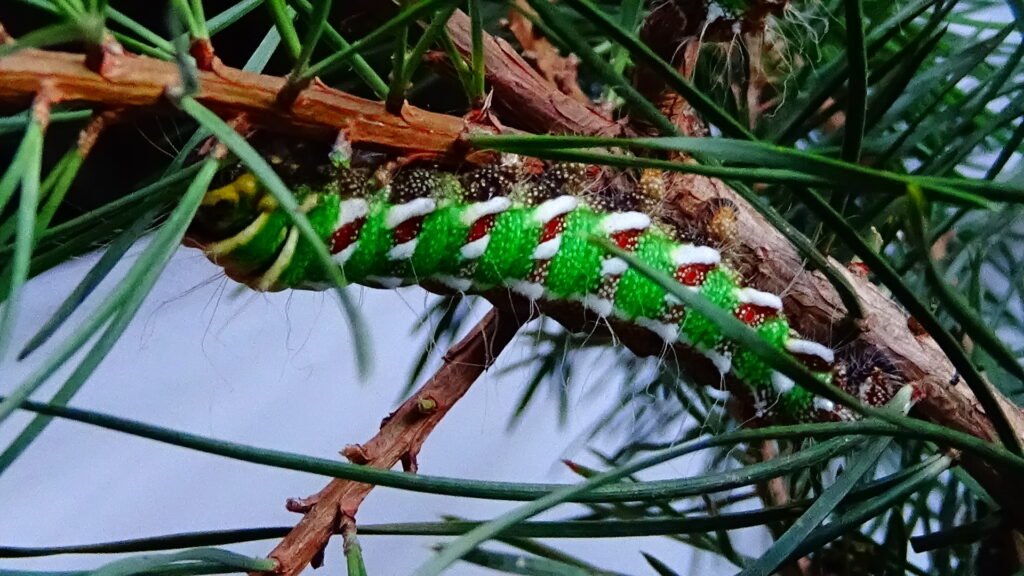(Grote, 1896)
Distribution : in mountains of Spain, France, Switzerland
Biotope : open light mountain and subalpine pine forests
Food plants Pinus (Najlepšie Pinus sylvestris)
Voltinism : univoltine
Pupation
Difficulty : A challenging species, lot of breeders struggle to raise this species.

Graellsia isabellae is undoubtedly one of the most enchanting species from Europe and even from around the world.
This species exhibits characteristic features of species from the genus Actias- However, it is a slightly different genus; this species dates back to the Tertiary period. It is a relic of the butterfly world. The genus Graellsia is a fundamental genus from the group Actias, Argema, Graellsia, which was the first to diverge from this evolutionary line.
However, this species can be very demanding to rear and pose a significant challenge for successful breeding. Therefore, I would not recommend it for beginners, who may be tempted by its beautiful appearance.
This species feeds on various coniferous trees, and it is best reared directly on a living plant outdoors. It tolerates both cool and warmer conditions, but excessive moisture can cause the caterpillars to die. Rearing is most effective in monofilament nets on the host plant during warm days, but successful breeding can also occur in a spacious mesh enclosure.
The eggs hatch within approximately two weeks and benefit from a moist environment.
When the caterpillars hatch, they can be fed in a plastic box. Some breeders, encountering issues with small caterpillars not eating, have placed the enclosure in a dark environment, which encouraged the caterpillars to start feeding.
After 2-3 days, the caterpillars grow significantly and are very willing to eat. It is best to offer the caterpillars Pinus sylvestriscuttings that are kept in water, but the needles themselves must not be wet.
Caterpillars tolerate various temperatures, but my breeding preferred warmth. Caterpillars need fresh and quality needles and a large amount of food. If the caterpillars start wandering around the enclosure, it could be a sign of unsuitable and inadequate conditions. As soon as the food aged, the caterpillars began to wander; however, when maintained fresh and in water, the caterpillars fed continuously.
L1- The hatchlings are very small and black in color, on the ventral side they have a white line near the spiracles. They eat a lot and grow fast.

L2–
L3– Húsenice už v tejto fáze života dorastajú do veľkých rozmerov pri vhodných podmienkach odchovu.
Po dobu celého odchovu je dôležité udržiavať čistotu, nechovať veľa kusov po kope, a zabezpečiť aby mali húsenice dostatok priestoru a potravy. Húsenice sa začínajú krásne vyfarbovať, je vidno zelenú farbu, a výrazné oranžové prieduchy.
V tejto fáze je dobré húsenice umiestniť do väčšieho húsenníka.

L4– Húsenice sa po dobu celého života a v každej novej fáze nesmierne krásne vyfarbujú do nádherných farieb.
Tým ako húsenice rastú vyžadujú aj viacej priestoru a potravy.

L5–
L6– Húsenice sú v tejto perióde života dych berúce.
Dorastajú do gigantických rozmerov. Po tele húsenice sú vidno riedke a dlhé biele chĺpky.
Vývoj sa čoskoro končí, a húsenice si čoskoro začnú spriadať kokony. Tak ako Actias dubernardi, tieto húsenice zliezajú z konárov a začínajú si hľadať miesto. Najlepšie je, ponúknuť im suchý rašelinník v ktorom sa húsenice zakuklia, avšak niektoré sa môžu dokoinca zakukliť medzi ihličím.

Kokony prezimujú a liahnu sa na ďalší rok počas jari, je možné ich prezimovať v chladničke alebo vonku.
Motýle prejavujú rôzne farebné variácie a odtiene. Párenie je veľmi náročné, veľa skúsených chovatelov často zlyháva. Je možné skúsiť ručné párenie, alebo umiestniť motýle von do priestranného a dobre vetraného húsenníku a motýle sa možno spária.
Je možné nechať samicu na voľno pustenú v kontrolovanom prostredí a nechať samca si ju nájsť. Dôvodom je, že samec sa môže zmiasť feromónamy samice v malej sieťovanej ubikácie a tak môže mať problém ju nájsť.


